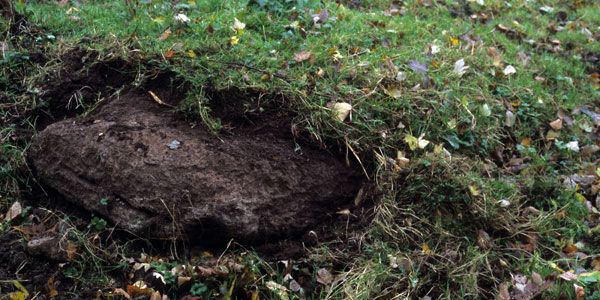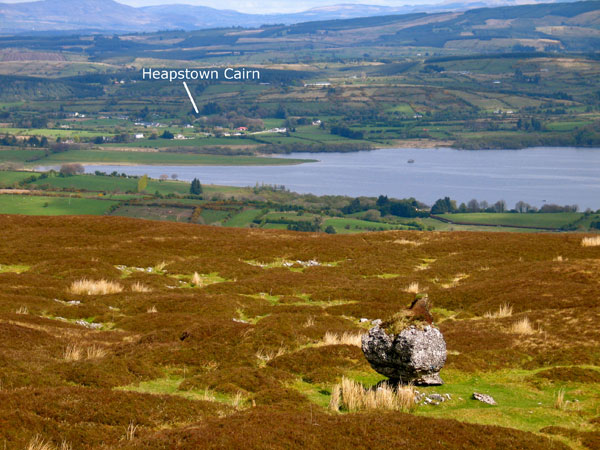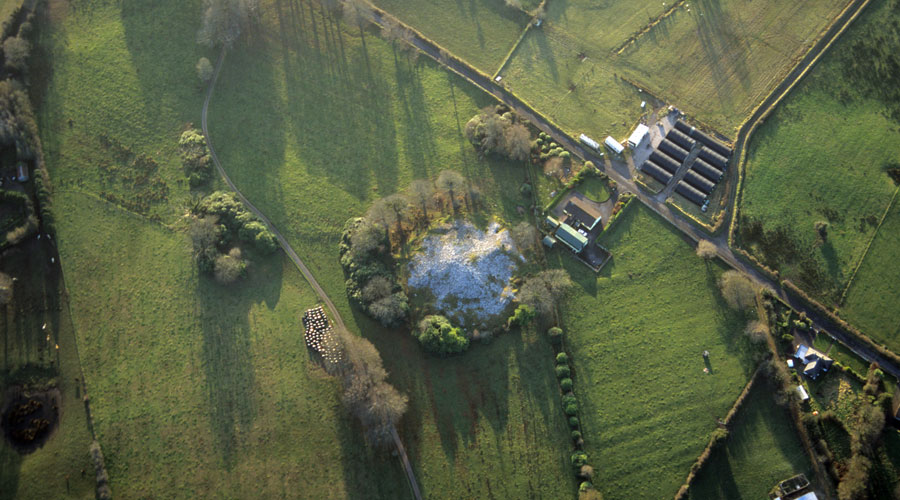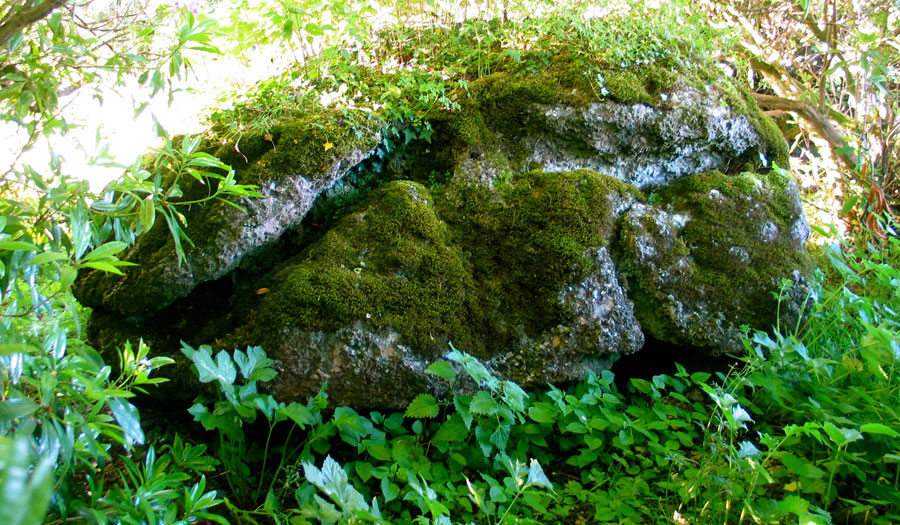Features and alignments
There are several interesting features at Heapstown which give some clues about the possible orientation of the monument. Approximately 50 m to the south-east of the cairn lies a large fallen pillar stone, which would have reached over 2 m when standing upright. The position of this stone in the southwest may mark an undiscovered entrance, as this is one of the undisturbed portions of the Cairn.
Cairn D at Loughcrew has a similar fallen pillar stone about 50 m from the Cairn on the north east side. Again, it is located by the most undisturbed area of the Cairn, and there has been speculation that it may mark the entrance. Both Newgrange and Knowth have exterior standing stones, and another is said to have stood outside Cairn T at Loughcrew.
If there is an unopened entrance at Heapstown in line with the stone, it would be oriented to the winter solstice sunrise, an azimuth of 135° as at Newgrange.
Also as at Newgrange, this would align to the full moon rises which fall nearest to the summer solstice. Furthermore, when viewed from the top of Heapstown, the setting winter solstice sun drops behind Treanmacmurtagh Cairn between Carrowkeel and Keashcorran in the Bricklieve Mountains. Given the current trend for early construction dates for Sligo passage graves, Heapstown Cairn may prove to be an older version of, or prototype for Newgrange.

Besides the fallen standing stone another unusual feature were shown to me by the landowner. About 10 m beyond the fallen stone and positioned on the same axis is another enigmatic structure - a huge limestone boulder, which is by far the largest rock near the cairn. This may prove to be some form of dolmen structure, as the rock is clearly placed on top of at least five other stones.
The landowner told me that he used to play beneath it as a child. The ground
level has risen in recent years due to the thick growth of rhodendern
bushes, and winter cattle foddering around both the boulder and stone.
The rock is composed of limestone with chert and looks like a massive brain. The location of the standing stone in relation to the
Cairn is shown above. The boulder is shown in the picture at the bottom of the page.

There are several other solstice alignments of note in the area. The winter solstice sunset, viewed from the top of Heapstown drops behind Treanmacmurtagh in the middle of the Bricklieves. The major and minor lunar standstills are marked by Cairn K and Kesh cairn. Another local alignment is the summer solstice sunset as seen from the Cairn of Shee Lugh on the highest point of Moytura in the townland of Barroe North. As the sun sets currently, it drops down over the village of Strandhill by the west cliffs of Knocknarea.
When the shift in position of the solstices over the last six thousand years is taken into account, the sun would have set over Queen Maeve's Cairn on the summit of Knocknarea, azimuth 315° and 180° opposite the winter solstice sunrise position. Another alignment of note is found in Cairn G at Carrowkeel which includes a roofbox type structure over its entrance. Although the axis of the chamber is aligned directly to Knocknarea, the absence of a passage the summer solstice sun set to enter the cairn and illuminate the left hand side of the chamber. Knocknarea is 12° farther north than the current solstice sunset position. Originally the sun would have set over Doomore, another cairn in the Ox Mountains; today it about sets 1.5 degrees to the left.
When Michael O'Kelly finished his survey of Dowth, he pointed out that from aerial photographs there was evidence of possibly several structures beneath ground level surrounding the Cairn. The same may well apply to Heapstown.


